Abstract
After immunization with keyhole limpet haemocyanin (KLH), increased concentrations of anti-KLH and anti-Fab' antibodies (Abs) were demonstrated in sera from 18 of 20 volunteers. In many cases, post-immunization sera contained soluble immune complexes that incorporated both anti-Fab' and 'hidden' or 'blocked' anti-KLH antibodies. The complexes containing hidden anti-KLH and blocking anti-Fab' Abs were not found in pre-immunization sera. The hidden Abs to KLH were revealed by demonstrating increases in anti-KLH activity in sera incubated previously with Fab' fragments, immobilized on plastic microtitre tray wells. Incubation with insoluble Fab' did not influence the quantity of anti-tetanus toxoid (TT) that was detected in these sera. Addition of affinity purified anti-Fab' Abs to samples, previously 'unblocked' by adsorption with immobilized Fab', depressed their anti-KLH activity to levels present before adsorption, but did not change the quantity of Abs to Dermatophytin, Trychophyton, or TT therein. These results suggest that some autoantibodies generically recognized as 'Fab' specific' have properties that are usually considered to be characteristic of autoanti-idiotypes.
Full text
PDF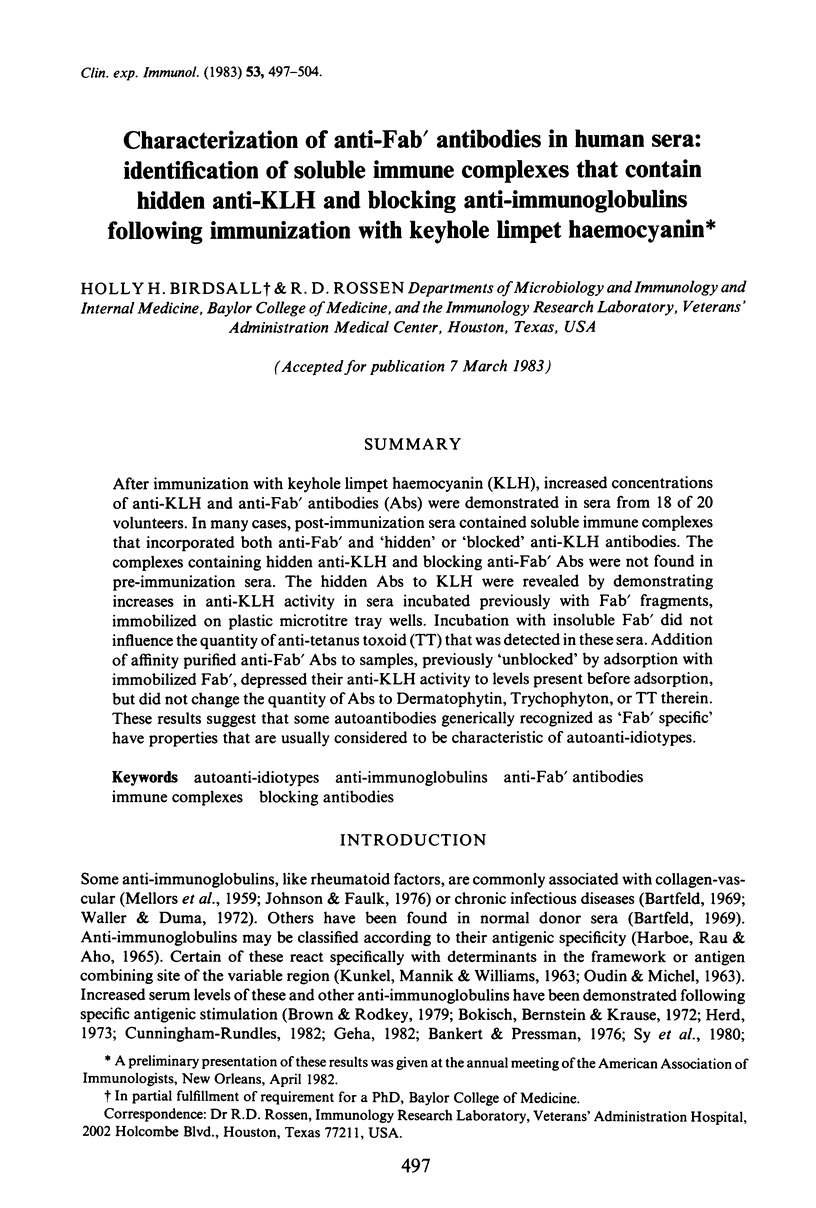
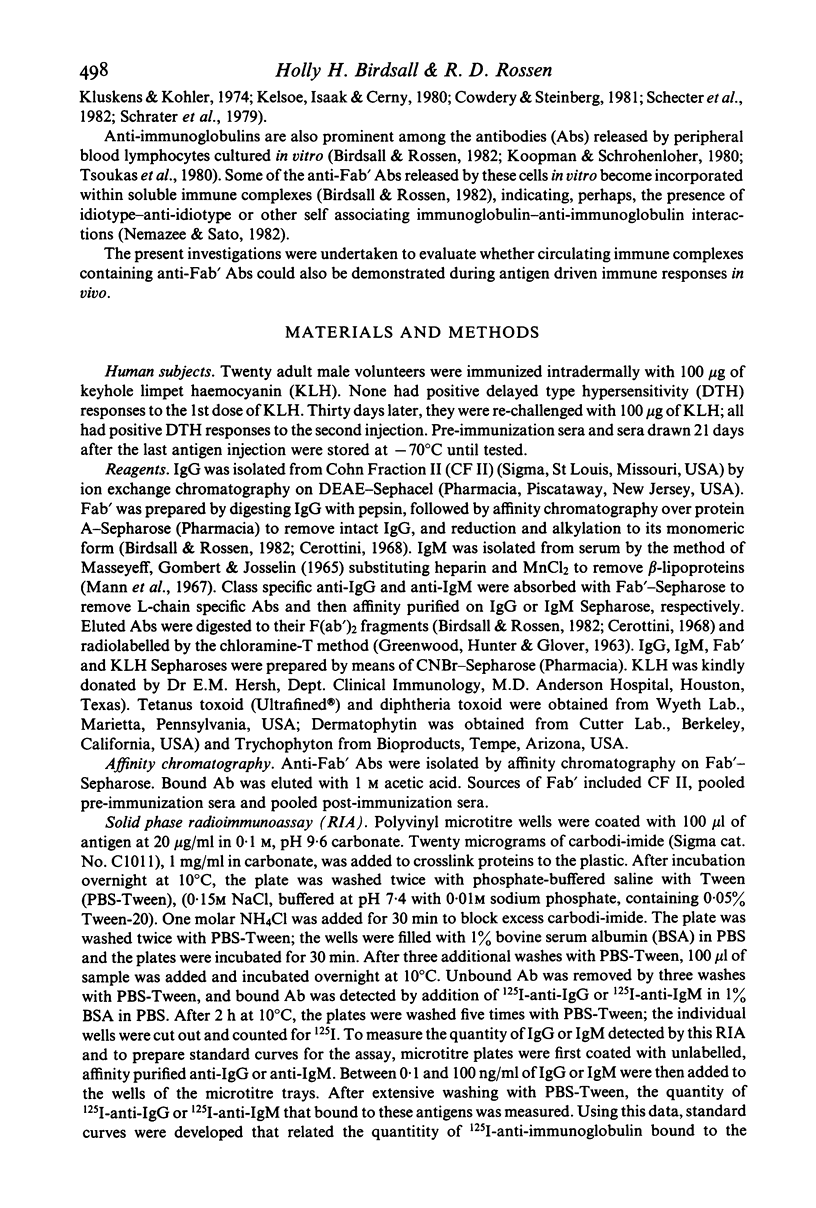
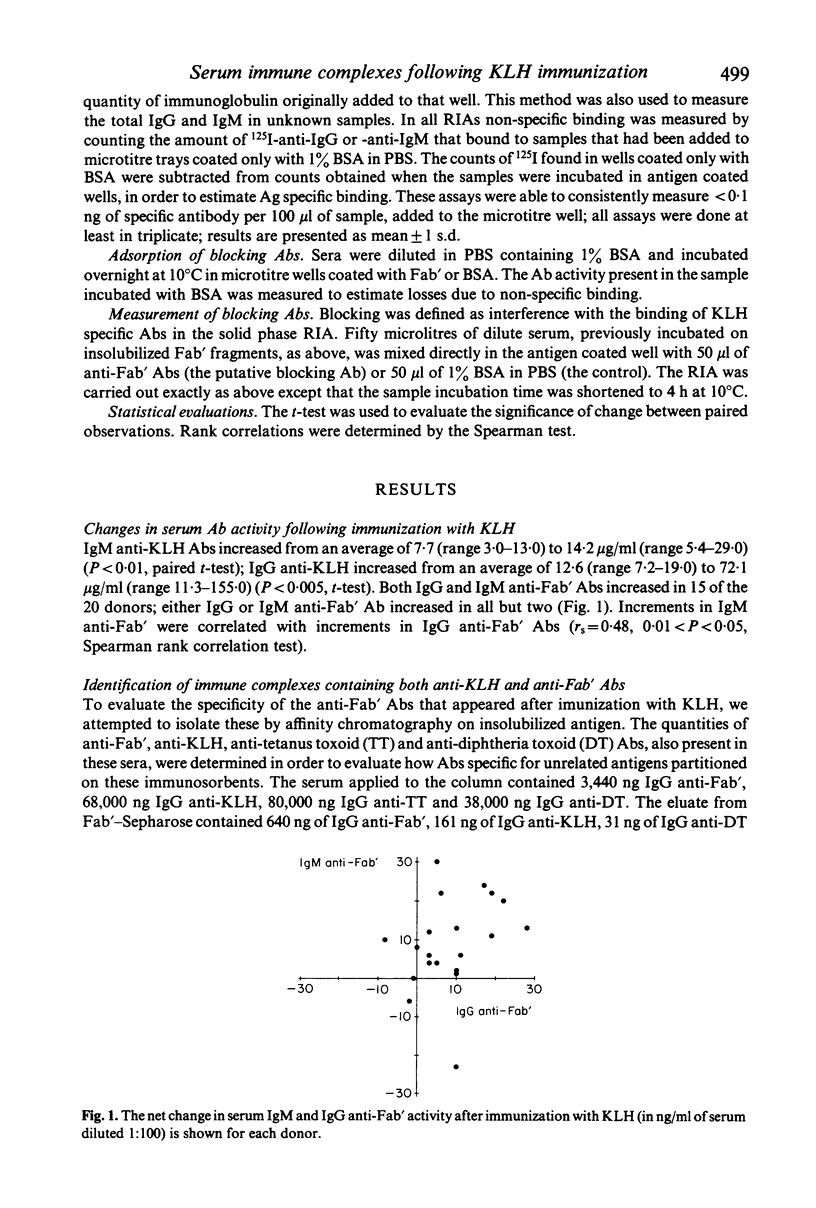
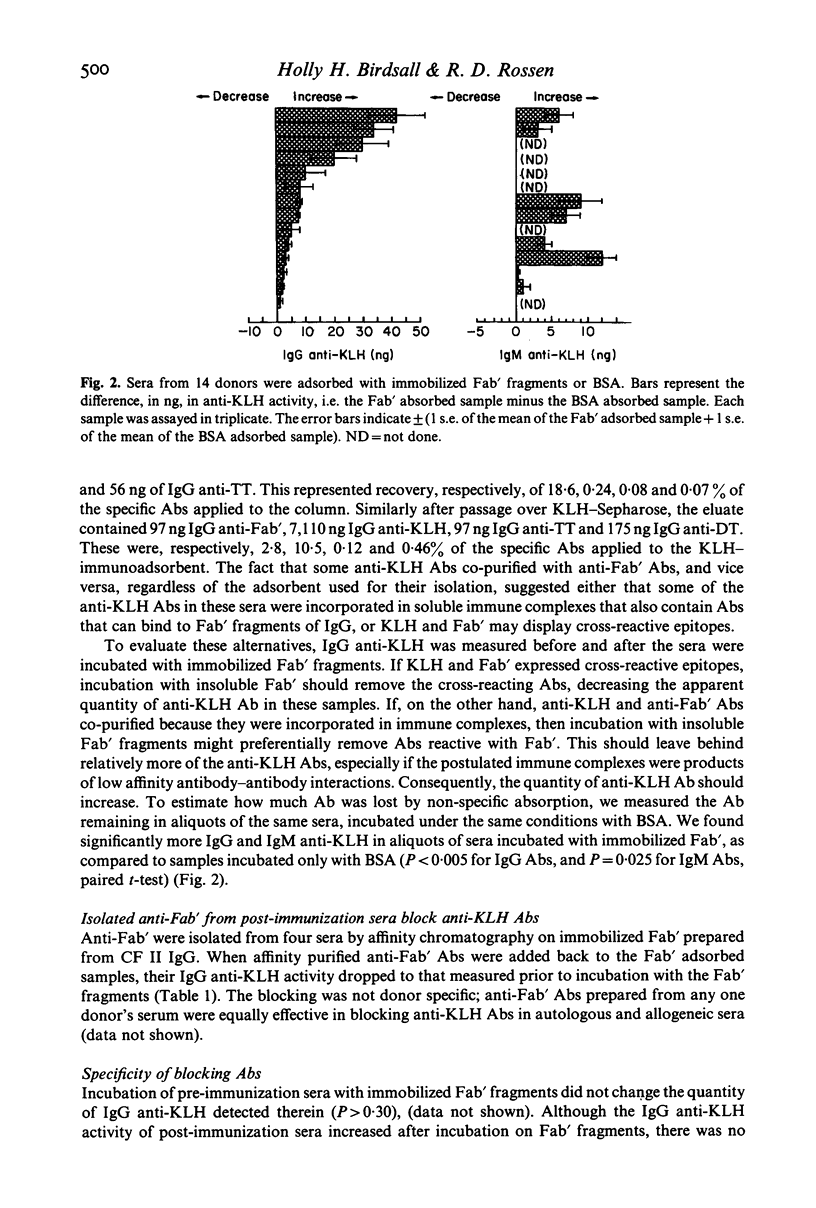
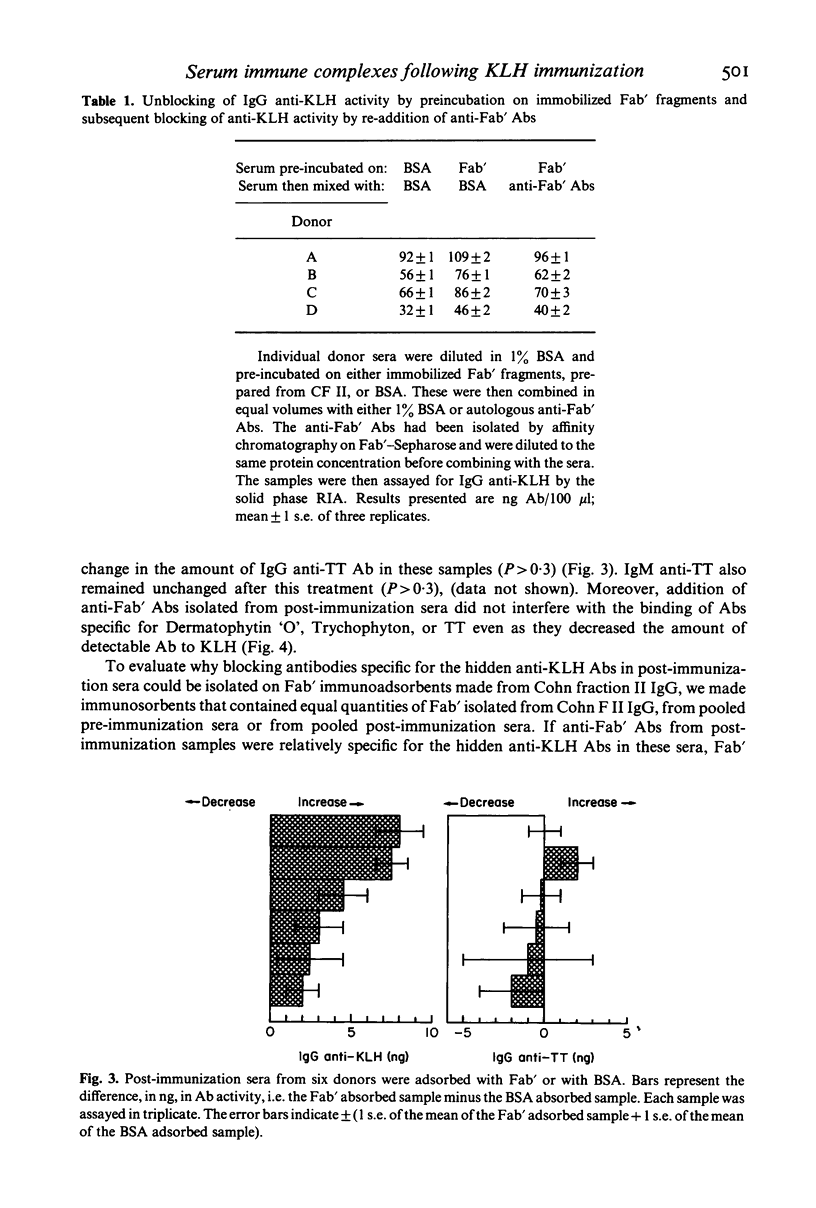
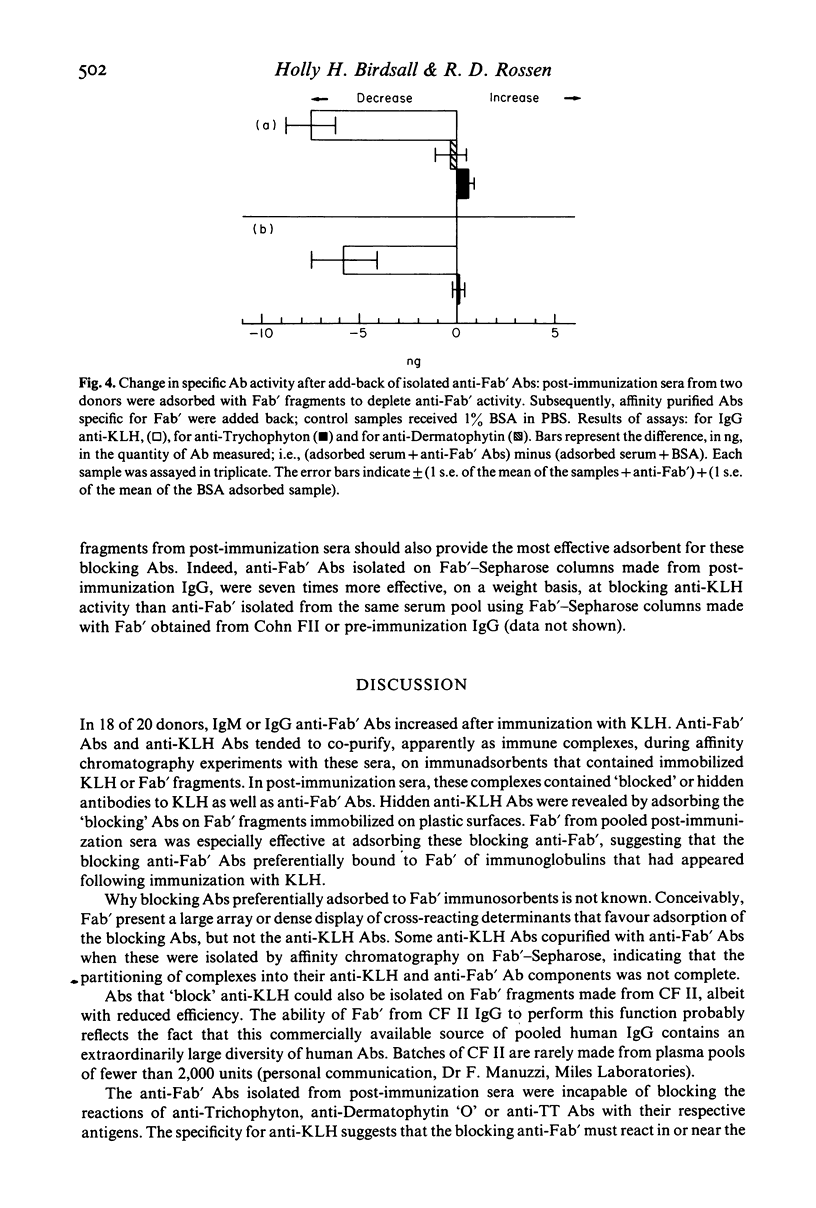
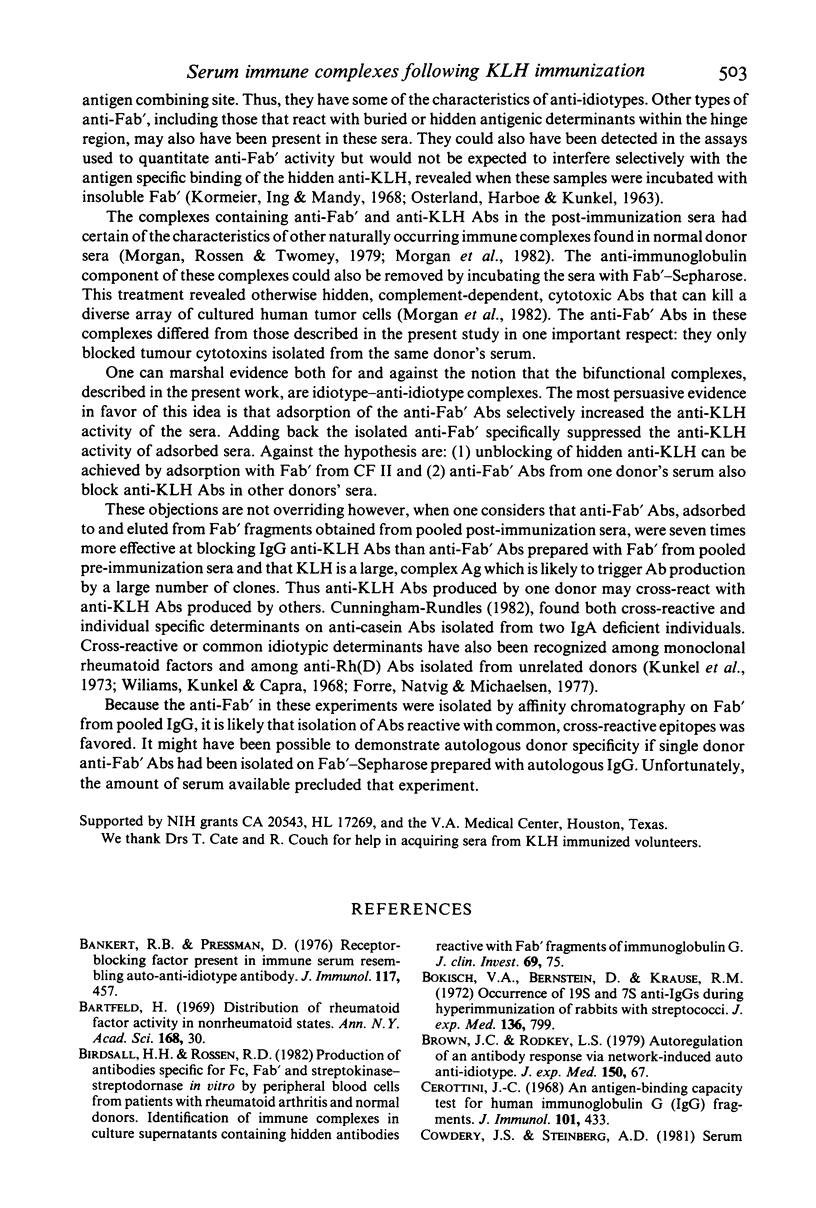
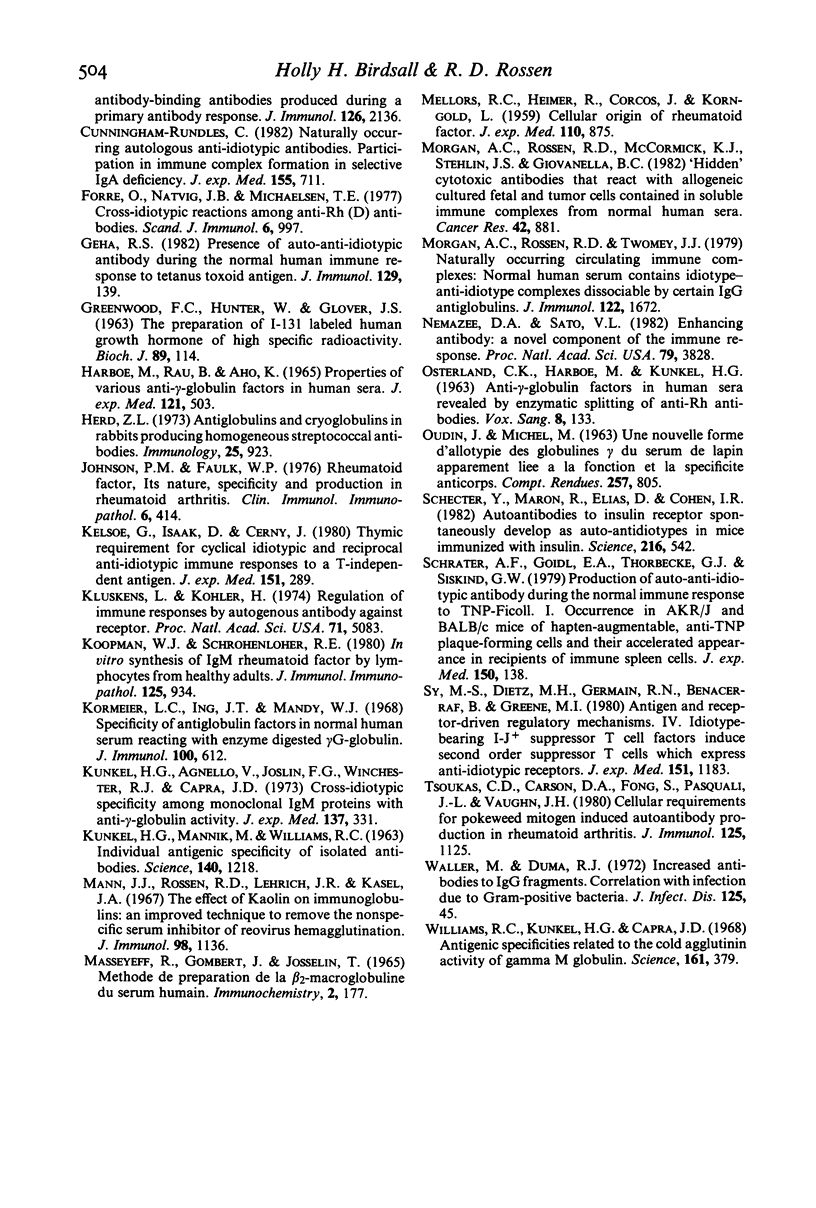
Selected References
These references are in PubMed. This may not be the complete list of references from this article.
- Bankert R. B., Pressman D. Receptor-blocking factor present in immune serum resembling auto-anti-idiotype antibody. J Immunol. 1976 Aug;117(2):457–462. [PubMed] [Google Scholar]
- Bartfeld H. Distribution of rheumatoid factor activity in nonrheumatoid states. Ann N Y Acad Sci. 1969 Dec 10;168(1):30–40. doi: 10.1111/j.1749-6632.1969.tb43092.x. [DOI] [PubMed] [Google Scholar]
- Bokisch V. A., Bernstein D., Krause R. M. Occurrence of 19S and 7S anti-IgGs during hyperimmunization of rabbits with streptococci. J Exp Med. 1972 Oct 1;136(4):799–815. doi: 10.1084/jem.136.4.799. [DOI] [PMC free article] [PubMed] [Google Scholar]
- Brown J. C., Rodkey L. S. Autoregulation of an antibody response via network-induced auto-anti-idiotype. J Exp Med. 1979 Jul 1;150(1):67–85. doi: 10.1084/jem.150.1.67. [DOI] [PMC free article] [PubMed] [Google Scholar]
- Cerottini J. C. An antigen-binding capacity test for human immunoglobulin G (IgG) fragments. J Immunol. 1968 Sep;101(3):433–438. [PubMed] [Google Scholar]
- Cowdery J. S., Steinberg A. D. Serum antibody-binding antibodies produced during a primary antibody response. J Immunol. 1981 Jun;126(6):2136–2138. [PubMed] [Google Scholar]
- Cunningham-Rundles C. Naturally occurring autologous anti-idiotypic antibodies. Participation in immune complex formation in selective IgA deficiency. J Exp Med. 1982 Mar 1;155(3):711–719. doi: 10.1084/jem.155.3.711. [DOI] [PMC free article] [PubMed] [Google Scholar]
- Forre O., Natvig J. B., Michaelsen T. E. Cross-idiotypic reactions among anti-Rh (D) antibodies. Scand J Immunol. 1977;6(10):997–1003. doi: 10.1111/j.1365-3083.1977.tb00335.x. [DOI] [PubMed] [Google Scholar]
- GREENWOOD F. C., HUNTER W. M., GLOVER J. S. THE PREPARATION OF I-131-LABELLED HUMAN GROWTH HORMONE OF HIGH SPECIFIC RADIOACTIVITY. Biochem J. 1963 Oct;89:114–123. doi: 10.1042/bj0890114. [DOI] [PMC free article] [PubMed] [Google Scholar]
- Geha R. S. Presence of auto-anti-idiotypic antibody during the normal human immune response to tetanus toxoid antigen. J Immunol. 1982 Jul;129(1):139–144. [PubMed] [Google Scholar]
- HARBOE M., RAU B., AHO K. PROPERTIES OF VARIOUS ANTI-GAMMA-GLOBULIN FACTORS IN HUMAN SERA. J Exp Med. 1965 Apr 1;121:503–519. doi: 10.1084/jem.121.4.503. [DOI] [PMC free article] [PubMed] [Google Scholar]
- Herd Z. L. Antiglobulins and cryoglobulins in rabbits producing homogeneous streptococcal antibodies. Immunology. 1973 Dec;25(6):923–930. [PMC free article] [PubMed] [Google Scholar]
- Johnson P. M., Faulk W. P. Rheumatoid factor: its nature, specificity, and production in rheumatoid arthritis. Clin Immunol Immunopathol. 1976 Nov;6(3):414–430. doi: 10.1016/0090-1229(76)90094-5. [DOI] [PubMed] [Google Scholar]
- Kelsoe G., Isaak D., Cerny J. Thymic requirement for cyclical idiotypic and reciprocal anti-idiotypic immune responses to a T-independent antigen. J Exp Med. 1980 Feb 1;151(2):289–300. doi: 10.1084/jem.151.2.289. [DOI] [PMC free article] [PubMed] [Google Scholar]
- Kluskens L., Köhler H. Regulation of immune response by autogenous antibody against receptor. Proc Natl Acad Sci U S A. 1974 Dec;71(12):5083–5087. doi: 10.1073/pnas.71.12.5083. [DOI] [PMC free article] [PubMed] [Google Scholar]
- Koopman W. J., Schrohenloher R. E. In vitro synthesis of IgM rheumatoid factor by lymphocytes from healthy adults. J Immunol. 1980 Aug;125(2):934–939. [PubMed] [Google Scholar]
- Kormeier L. C., Ing J. T., Mandy W. J. Specificity of antiglobulin factors in normal human serum reacting with enzyme digested gamma-G-globulin. J Immunol. 1968 Mar;100(3):612–621. [PubMed] [Google Scholar]
- Kunkel H. G., Agnello V., Joslin F. G., Winchester R. J., Capra J. D. Cross-idiotypic specificity among monoclonal IgM proteins with anti- -globulin activity. J Exp Med. 1973 Feb 1;137(2):331–342. doi: 10.1084/jem.137.2.331. [DOI] [PMC free article] [PubMed] [Google Scholar]
- Kunkel H. G., Mannik M., Williams R. C. Individual Antigenic Specificity of Isolated Antibodies. Science. 1963 Jun 14;140(3572):1218–1219. doi: 10.1126/science.140.3572.1218. [DOI] [PubMed] [Google Scholar]
- Mann J. J., Rossen R. D., Lehrich J. R., Kasel J. A. The effect of kaolin on immunoglobulins: an improved technique to remove the nonspecific serum inhibitor of reovirus hemagglutination. J Immunol. 1967 Jun;98(6):1136–1142. [PubMed] [Google Scholar]
- Masseyeff R., Gombert J., Josselin J. Methode de preparation de la beta-2-macroglobuline du serum humain. Immunochemistry. 1965 Jun;2(2):177–180. doi: 10.1016/0019-2791(65)90019-4. [DOI] [PubMed] [Google Scholar]
- Mellors R. C., Heimer R., Corcos J., Korngold L. CELLULAR ORIGIN OF RHEUMATOID FACTOR. J Exp Med. 1959 Nov 30;110(6):875–886. doi: 10.1084/jem.110.6.875. [DOI] [PMC free article] [PubMed] [Google Scholar]
- Morgan A. C., Jr, Rossen R. D., Twomey J. J. Naturally occurring circulating immune complexes: normal human serum contains idiotype-anti-idiotype complexes dissociable by certain IgG antiglobulins. J Immunol. 1979 May;122(5):1672–1680. [PubMed] [Google Scholar]
- Morgan A. C., Rossen R. D., McCormick K. J., Stehlin J. S., Jr, Giovanella B. C. "Hidden" cytotoxic antibodies that react with allogeneic cultured fetal and tumor cells contained in soluble immune complexes from normal human sera. Cancer Res. 1982 Mar;42(3):881–887. [PubMed] [Google Scholar]
- Nemazee D. A., Sato V. L. Enhancing antibody: a novel component of the immune response. Proc Natl Acad Sci U S A. 1982 Jun;79(12):3828–3832. doi: 10.1073/pnas.79.12.3828. [DOI] [PMC free article] [PubMed] [Google Scholar]
- OSTERLAND C. K., HARBOE M., KUNKEL H. G. Anti-gamma-globulin factors in human sera revealed by enzymatic splitting of anti-Rh antibodies. Vox Sang. 1963 Mar-Apr;8:133–152. doi: 10.1111/j.1423-0410.1963.tb03290.x. [DOI] [PubMed] [Google Scholar]
- Schrater A. F., Goidl E. A., Thorbecke G. J., Siskind G. W. Production of auto-anti-idiotypic antibody during the normal immune response to TNP-ficoll. I. Occurrence in AKR/J and BALB/c mice of hapten-augmentable, anti-TNP plaque-forming cells and their accelerated appearance in recipients of immune spleen cells. J Exp Med. 1979 Jul 1;150(1):138–153. doi: 10.1084/jem.150.1.138. [DOI] [PMC free article] [PubMed] [Google Scholar]
- Shechter Y., Maron R., Elias D., Cohen I. R. Autoantibodies to insulin receptor spontaneously develop as anti-idiotypes in mice immunized with insulin. Science. 1982 Apr 30;216(4545):542–545. doi: 10.1126/science.7041258. [DOI] [PubMed] [Google Scholar]
- Sy M. S., Dietz M. H., Germain R. N., Benacerraf B., Greene M. I. Antigen- and receptor-driven regulatory mechanisms. IV. Idiotype-bearing I-J+ suppressor T cell factors induce second-order suppressor T cells which express anti-idiotypic receptors. J Exp Med. 1980 May 1;151(5):1183–1195. doi: 10.1084/jem.151.5.1183. [DOI] [PMC free article] [PubMed] [Google Scholar]
- Tsoukas C. D., Carson D. A., Fong S., Pasquali J. L., Vaughan J. H. Cellular requirements for pokeweed mitogen-induced autoantibody production rheumatoid arthritis. J Immunol. 1980 Sep;125(3):1125–1129. [PubMed] [Google Scholar]
- Waller M., Duma R. J. Increased antibodies to IgG fragments: correlation with infection due to gram-positive bacteria. J Infect Dis. 1972 Jan;125(1):45–53. doi: 10.1093/infdis/125.1.45. [DOI] [PubMed] [Google Scholar]
- Willims R. C., Jr, Kunkel H. G., Capra J. D. Antigenic specificities related to the cold agglutinin activity of gamma M globulins. Science. 1968 Jul 26;161(3839):379–381. doi: 10.1126/science.161.3839.379. [DOI] [PubMed] [Google Scholar]


